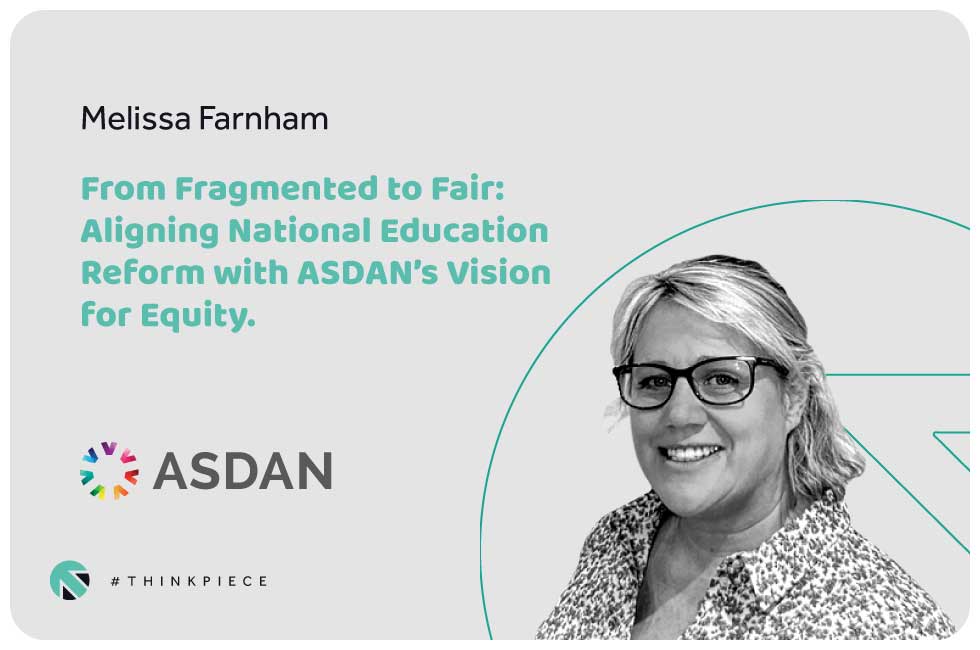We are delighted to share this thinkpiece by Melissa Farnham, CEO of ASDAN and FED Futures Partner. From Fragmented to Fair: Aligning National Education Reform with ASDAN’s Vision for Equity explores how England’s education system continues to fail too many young people, particularly those from disadvantaged backgrounds, with SEND or outside the traditional academic mold. Drawing on the Foundation for Education Development’s 2025 report, Melissa highlights three urgent priorities – embedding inclusion, supporting and diversifying the education workforce and strengthening partnerships – that align closely with ASDAN’s mission. With practical solutions ranging from an Inclusive Education Guarantee to a more representative teaching profession, the article makes the case for bold, long-term reform to turn equity from an aspiration into a reality.
From Fragmented to Fair: Aligning National Education Reform with ASDAN’s Vision for Equity
Education, at its best, is a leveller, a tool for opportunity, belonging, and social mobility. But for far too many young people across England, it remains a postcode lottery. In its new national report, the Foundation for Education Development (FED) has laid bare a truth ASDAN has long known: our current system does not work for every learner. And until we design it to do so, equity will remain an empty promise.
At ASDAN, we believe that no learner’s future should be determined by the circumstances they’re born into. Whether a child is growing up in poverty, has special educational needs, or simply doesn’t fit the conventional academic mould, they deserve a pathway that recognises their potential, not one that penalises their difference.
The FED’s 2025 report echoes this belief and brings data, lived experience and national consultation to back it. It identifies three urgent priorities: embedding inclusion, supporting the education workforce, and strengthening local and national partnerships. All three align with ASDAN’s mission, and all three require political courage and long-term commitment.
Let’s start with inclusion. ASDAN’s work with schools, alternative provision, and youth organisations shows daily that inclusion must be designed in, not bolted on. Yet across the country, young people with SEND, from minoritised backgrounds or living in poverty are still too often excluded, explicitly through permanent removal, or implicitly through rigid assessments and narrow curricula. FED’s proposed Inclusive Education Guarantee would bring long-overdue consistency, clarity, and ambition to this space.
Then there’s the workforce. Equity in education is impossible without a supported, skilled and representative profession. Teachers and support staff are doing extraordinary work under extraordinary pressure, but the system doesn’t make it easy. ASDAN has long championed flexible, holistic approaches to learning that allow educators to meet diverse needs. The FED calls for protected CPD time, inclusive recruitment, and flexibility in career pathways. These are not perks, they’re essentials.
But there’s another dimension to the workforce that’s often overlooked: representation. Too many young people don’t see themselves reflected in the adults who teach and lead them. The FED report notes that while 83% of the population is white, 96% of headteachers are. A stark gap that affects how learners perceive their place in the system. When students never see role models who share their background, identity or lived experience, the message, however unintentional, is clear: this system was not built with you in mind. Building a more diverse, representative workforce is not just a matter of justice, but a driver of aspiration and belonging.
And finally, partnership. ASDAN’s programmes succeed because we work across sectors, with educators, employers, families, and communities. Yet, as the FED notes, many parts of the education system remain fragmented. True equity requires joined-up thinking, across education, health, care and beyond. Collaboration must become core infrastructure, not an afterthought.
Importantly, the FED report doesn’t just diagnose what’s wrong. It offers a roadmap for change. Its proposals, from curriculum reform to a National Inclusion Framework, are not abstract ideals. They are practical, scalable solutions that, if adopted, could help build an education system that truly delivers for all.
At ASDAN, we see the power of equity in action every day, when a disengaged learner rediscovers confidence through a practical qualification; when a young carer finds their experience reflected in the curriculum; when a school leader chooses to meet learners where they are, not where the system says they should be.
But we also see the costs of delay. Of one-size-fits-all metrics. Of children arriving hungry. Of schools doing more with less.
The FED is right: inclusion cannot wait. Equity cannot be achieved by tweaks and tokenism. It demands intentional, long-term reform grounded in the belief that every child matters, not just in theory, but in policy, practice, and funding.
It’s time to stop asking if we can afford to do this work and start asking if we can afford not to.



